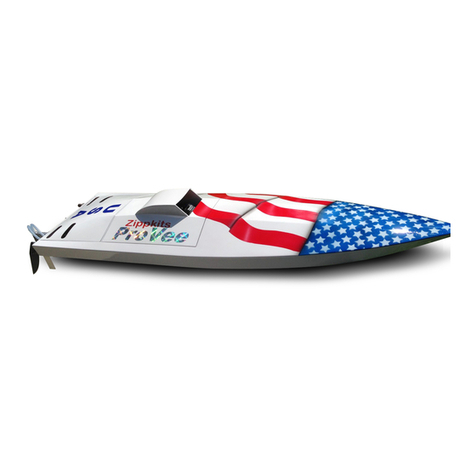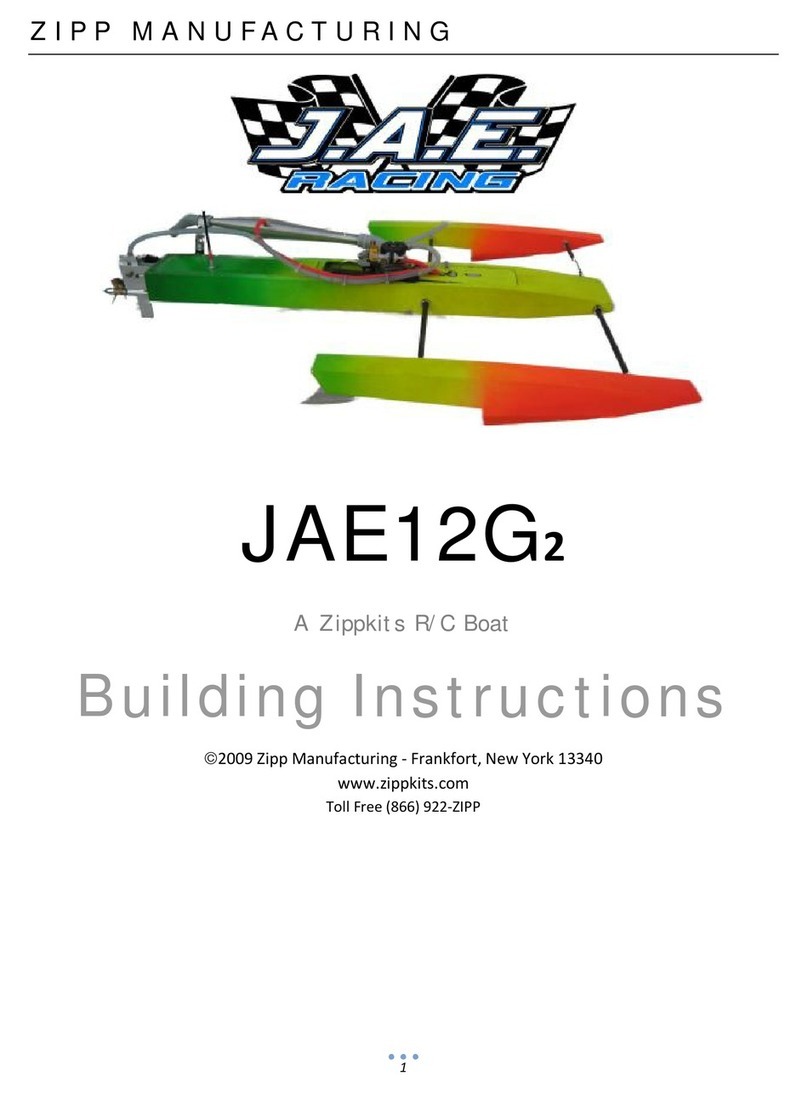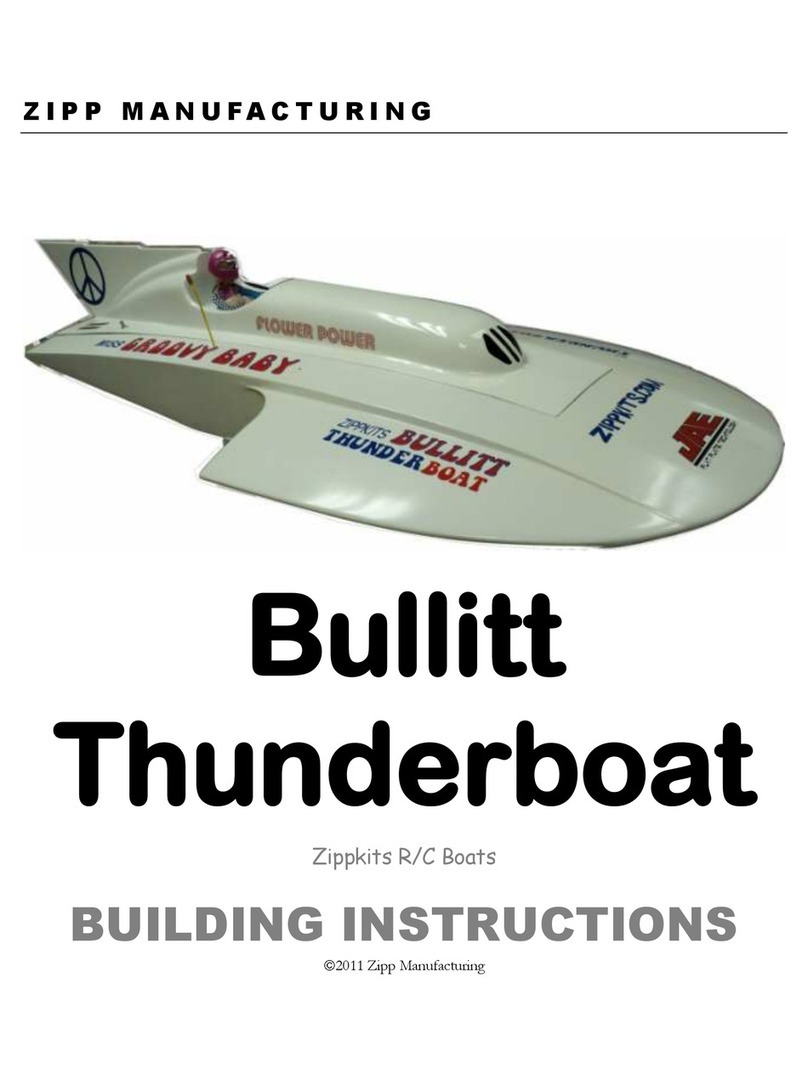Let’s get started.
Attach the jig board to your FLAT bench (or 12x48
ply) with screws, nails, clamps or whatever you
need, to make sure it’s attached to the surface.
Make sure the “F” is so that you can read it.
Remove bulkheads R, 4, 6 and the (2) sponson
sides.
Sand the edges with 80 grit to remove the fuzz, as
well as the little tabs that held them in the sheet.
Lay each sponson side on your bench so that they
are mirror images of each other.
Test fit the half bulkheads R, 4 and 6 into the sides.
Be sure that you understand which is the bottom of
the sponson sides and bulkheads. Put pieces of
waxed paper under the areas you are gluing so that
you don’t attach the parts to the bench.
If all is well, glue the half bulkheads in place with
medium CA and accelerator.
Use a square to be sure that all bulkheads are 90
degrees to the side.
Remove all remaining bulkheads from their sheets,
and sand the edges smooth as before. Make sure
all parts are marked before you remove them.
Assemble the bulkheads into the slots in the sides,
including the ¼ inch transom bulkhead. Be sure that
all are in the correct slot. Don’t glue anything yet.
Put this whole contraption on the jig, and carefully
insert each tab into its jig slot.
You can use a small hammer to tap each bulkhead
to be sure it is seated.
Don’t let the tabs extend below the jig, but make
sure that all tabs are fully inserted.
Once you are happy with the way everything goes
together, start gluing the tabs into the jig.
Tap each tab to be sure it is fully seated.
Remove and sand the jig supports, and glue them
to the jig at bulkheads 6 and the nose. The
supports glue into slots in the jig.
Using thin CA and accelerator, glue the bulkheads
to the sponson insides. Don’t glue the ¼ inch
transom yet. Be sure that all bulkheads are flush
top and bottom, and fully inserted in their slots.
Try to keep everything as straight and square as
possible.































